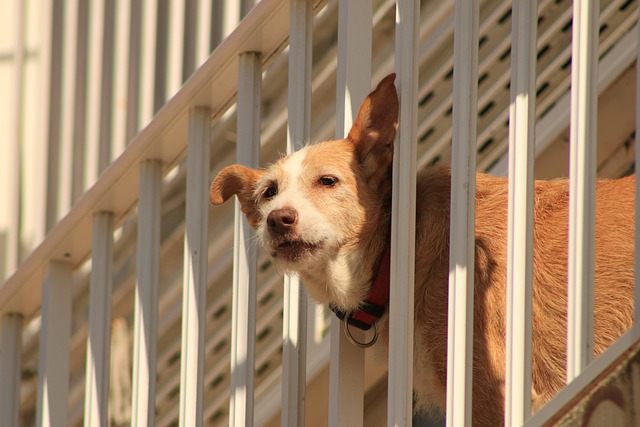11 Known Types of Aggression in Dogs Explained

Today, let’s dive into the fascinating world of dogs and talk about a topic that needs some attention: types of aggression in dogs.
In this blog post, we’ll explore the different forms of aggression our furry friends can exhibit, from territorial to fear-based aggression, and discuss how understanding these behaviors can help us create a safer and happier environment for our canine companions.
Let’s get started…
What is Aggression in Dogs
Aggression in dogs refers to any behavior displayed by a dog that is intended to cause harm or intimidate another animal or human.
It can manifest in various forms, such as growling, biting, lunging, or snarling. Aggression in dogs can be caused by a variety of factors, including fear, territoriality, resource guarding, or socialization issues.
It is important to address aggression in dogs promptly and seek professional help from a veterinarian or a certified dog behaviorist to ensure the safety of both the dog and those around them.
Types of Aggression in Dogs
The following are some of the most common types of aggression in dogs:
1. Social Aggression
Social aggression in dogs refers to aggressive behavior exhibited towards other dogs or animals. It can be caused by various factors, including fear, territoriality, or lack of proper socialization.
Symptoms of social aggression may include growling, lunging, snapping, or biting when in the presence of other dogs.
Resolving social aggression requires a multi-faceted approach, including behavior modification techniques, desensitization and counter-conditioning, and professional training.
It is crucial to consult with a qualified dog behaviorist or trainer to develop a personalized behavior modification plan to address and manage social aggression in dogs effectively.
2. Territorial Aggression
Territorial aggression in dogs is a type of aggression where dogs display aggressive behavior to protect their perceived territory.
Possible causes of territorial aggression include genetics, lack of socialization, or past traumatic experiences.
Symptoms may include growling, barking, lunging, and even biting when someone or something enters the dog’s territory. To resolve territorial aggression, it is crucial to consult a professional dog trainer or behaviorist.
They can develop a behavior modification plan that may involve desensitization, counter-conditioning, and positive reinforcement techniques to help the dog feel more secure and comfortable in their environment.
3. Fear Aggression
Fear aggression in dogs is a type of aggression that occurs when a dog feels threatened or scared. It can be caused by a variety of factors, such as past traumatic experiences, lack of socialization, or genetic predisposition.
Symptoms of fear aggression include growling, barking, lunging, or even biting when the dog feels threatened.
To resolve fear aggression in dogs, it is important to consult with a professional dog trainer or behaviorist who can create a comprehensive behavior modification plan.
This plan may involve desensitization and counter-conditioning techniques to help the dog feel more comfortable and confident in fearful situations.
4. Resource Guarding Aggression
Resource guarding aggression in dogs is a type of aggression where a dog becomes possessive and defensive over certain resources, such as food, toys, or space.
It can be caused by various factors, including fear, insecurity, past experiences, or genetics. Symptoms may include growling, snarling, snapping, or even biting when approached near the guarded resource.
To resolve resource guarding aggression, it is important to consult a professional dog trainer or behaviorist who can develop a behavior modification plan.
This plan may involve desensitization and counterconditioning techniques, teaching the dog alternative behaviors, and implementing management strategies to prevent resource guarding situations.
5. Redirected Aggression
Redirected aggression in dogs is a type of aggression where a dog redirects its aggression towards a person, animal, or object that is not the initial source of stress or conflict.
This behavior can be triggered when a dog is unable to directly confront or resolve the source of its frustration.
Possible causes of redirected aggression include territorial disputes, fear, or frustration. Symptoms may include growling, lunging, biting, or excessive barking.
To resolve redirected aggression, it is important to identify and remove the underlying trigger, provide a safe and calm environment, and seek professional help from a certified dog behaviorist or trainer for behavior modification techniques.
6. Maternal Aggression
Maternal aggression in dogs refers to a type of aggression displayed by mother dogs towards other animals or humans, particularly during the postpartum period.
It is believed to be a protective behavior aimed at ensuring the safety of the mother’s puppies.
Symptoms of maternal aggression may include growling, barking, snapping, or even biting. The possible causes of this aggression can vary and may include hormonal changes, fear, or a perceived threat to the puppies.
To resolve maternal aggression, it is essential to provide a safe and secure environment for the mother and her puppies, limit interactions with unfamiliar individuals or animals, and consult a professional dog trainer or behaviorist for guidance on behavior modification techniques.
7. Predatory Aggression
Predatory aggression in dogs is a type of aggression that stems from their natural hunting instincts. It is triggered by the sight of small animals, such as squirrels or rabbits, and can be dangerous if not managed properly.
Symptoms of predatory aggression include intense focus, stalking behavior, and a sudden burst of energy when the target is within reach.
To resolve this aggression, it is crucial to provide appropriate outlets for the dog’s hunting instincts, such as engaging in controlled play sessions or using puzzle toys.
Training and desensitization techniques can also help redirect the dog’s focus and teach them alternative behaviors.
Seeking professional help from a qualified dog trainer or behaviorist is highly recommended for a comprehensive approach to resolving predatory aggression.
8. Pain-Induced Aggression
Pain-induced aggression in dogs is a type of aggression that occurs when a dog reacts aggressively due to pain or discomfort.
The possible cause of this aggression can be an underlying medical condition or injury that is causing the dog pain.
Symptoms of pain-induced aggression may include growling, snarling, snapping, or biting when touched or approached.
To resolve this issue, it is crucial to identify and address the underlying cause of the pain.
Consulting with a veterinarian is essential to diagnose and treat any medical conditions, and implementing pain management strategies, such as medication or physical therapy, can help alleviate the discomfort and reduce the aggression.
9. Learned Aggression
Learned aggression in dogs refers to aggressive behavior that is acquired through experience or conditioning. It is a type of aggression that is not innate but is learned over time.
Possible causes of learned aggression in dogs can include past traumatic experiences, lack of socialization, or reinforcement of aggressive behavior.
Symptoms may include growling, barking, lunging, or biting in response to specific triggers.
Resolving learned aggression in dogs requires a combination of behavior modification techniques, positive reinforcement training, desensitization, and counterconditioning to help the dog unlearn their aggressive responses and develop more appropriate behavior patterns.
10. Idiopathic Aggression
Idiopathic aggression in dogs is a type of aggression that occurs without an identifiable cause. It can manifest as sudden outbursts of aggressive behavior towards people, animals, or objects.
The possible causes of this aggression are still unknown, making it difficult to address directly. Symptoms may include growling, biting, snapping, or intense staring.
To resolve idiopathic aggression, it is crucial to consult a professional dog behaviorist or veterinarian who can create a tailored behavior modification plan and potentially prescribe medication to manage the aggression.
Early intervention and consistent training are essential in managing and improving the dog’s behavior.
11. Play Aggression
Play aggression in dogs is a type of aggression that occurs during playtime. It is characterized by behaviors such as growling, biting, and rough play.
Possible causes of play aggression include lack of socialization, inadequate training, or a previous negative experience during play.
Symptoms may include intense play biting, refusing to release toys, or escalating aggression during play.
To resolve play aggression, it is important to provide proper socialization, positive reinforcement training, and redirecting the dog’s attention to appropriate toys and activities.
Seeking guidance from a professional dog trainer or behaviorist can also be beneficial in addressing and managing play aggression in dogs.
Causes of Aggression in Dogs
Aggression in dogs can have various causes, including genetics, improper socialization, fear, and territoriality. Some dogs may have a genetic predisposition towards aggression, which can be influenced by breeding practices.
Improper socialization during a dog’s critical developmental period can result in fear-based aggression towards humans or other animals.
Additionally, dogs may display aggression when they feel their territory or resources are being threatened. Understanding these causes can help in addressing and managing aggression in dogs.
Read more about things that causes aggression in dogs.
Signs of Aggression in Dogs
Aggression in dogs can manifest through various signs. These signs may include growling, snarling, baring teeth, lunging, and biting.
Dogs may also exhibit aggressive body language, such as raised hackles, stiff posture, and a fixed stare.
Additionally, aggressive dogs may display dominant behavior, such as resource guarding or mounting.
It is important to recognize these signs of aggression in dogs and seek professional help to address and manage aggression in dogs.
How to Address Aggression in Dogs
Addressing aggression in dogs requires a multi-faceted approach. Firstly, it is crucial to identify the root cause of the aggression, whether it is fear, territoriality, or frustration.
Secondly, seek professional help from a certified dog trainer or behaviorist to develop a tailored behavior modification plan.
Thirdly, create a safe environment by managing triggers and gradually exposing the dog to controlled situations that provoke aggression.
Consistency and positive reinforcement are key in implementing the behavior modification plan.
Lastly, prioritize the safety of everyone involved and consider measures such as using a muzzle or seeking veterinary intervention if necessary.
Frequently Asked Questions
What are the different types of aggression in dogs?
Dogs can display various types of aggression, including fear aggression, territorial aggression, protective aggression, social aggression, redirected aggression, and predatory aggression.
What is fear aggression in dogs?
Fear aggression occurs when a dog reacts aggressively due to fear or anxiety. It may manifest as growling, barking, or even biting when the dog feels threatened or cornered.
How can I identify territorial aggression in my dog?
Territorial aggression is when a dog becomes aggressive to protect its territory or personal space. Signs include barking, lunging, and even biting when someone or another animal enters their perceived territory.
What is protective aggression, and when does it occur?
Protective aggression is when a dog becomes aggressive in order to protect their owner or family members. This type of aggression may arise when the dog perceives a threat or feels the need to defend their loved ones.
Can dogs exhibit social aggression? If so, what does it look like?
Yes, dogs can display social aggression, which typically occurs when they feel threatened or challenged by another dog or person. Signs of social aggression may include growling, snarling, and even biting during social interactions.
What is redirected aggression in dogs?
Redirected aggression happens when a dog is unable to direct their aggression toward the source of their frustration or anxiety, so they redirect it onto another target, such as another dog or even a person nearby.
Conclusion
In conclusion, understanding the different types of aggression in dogs is crucial for pet owners.
By recognizing the signs and seeking professional help when needed, we can create a safe and harmonious environment for both our furry friends and ourselves.
Remember, with patience, training, and love, we can help our dogs overcome aggression and live happy, balanced lives.



![How To Stop Puppy Biting Feet [Explained] How To Stop Puppy Biting Feet](https://petcreeks.com/wp-content/uploads/2023/02/How-To-Stop-Puppy-Biting-Feet-768x555.jpg)
![New Puppy Crying In Crate At Night [Tips] New Puppy Crying In Crate At Night](https://petcreeks.com/wp-content/uploads/2023/02/New-Puppy-Crying-In-Crate-At-Night-768x555.jpg)

